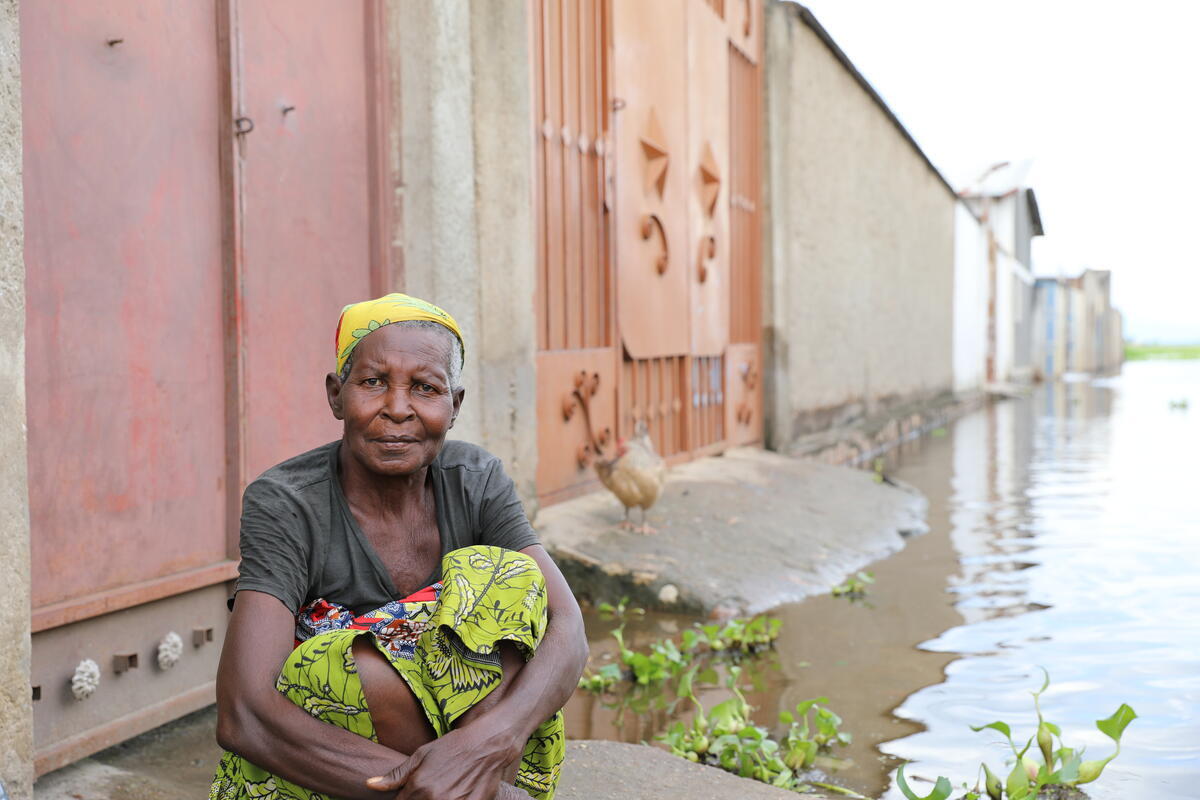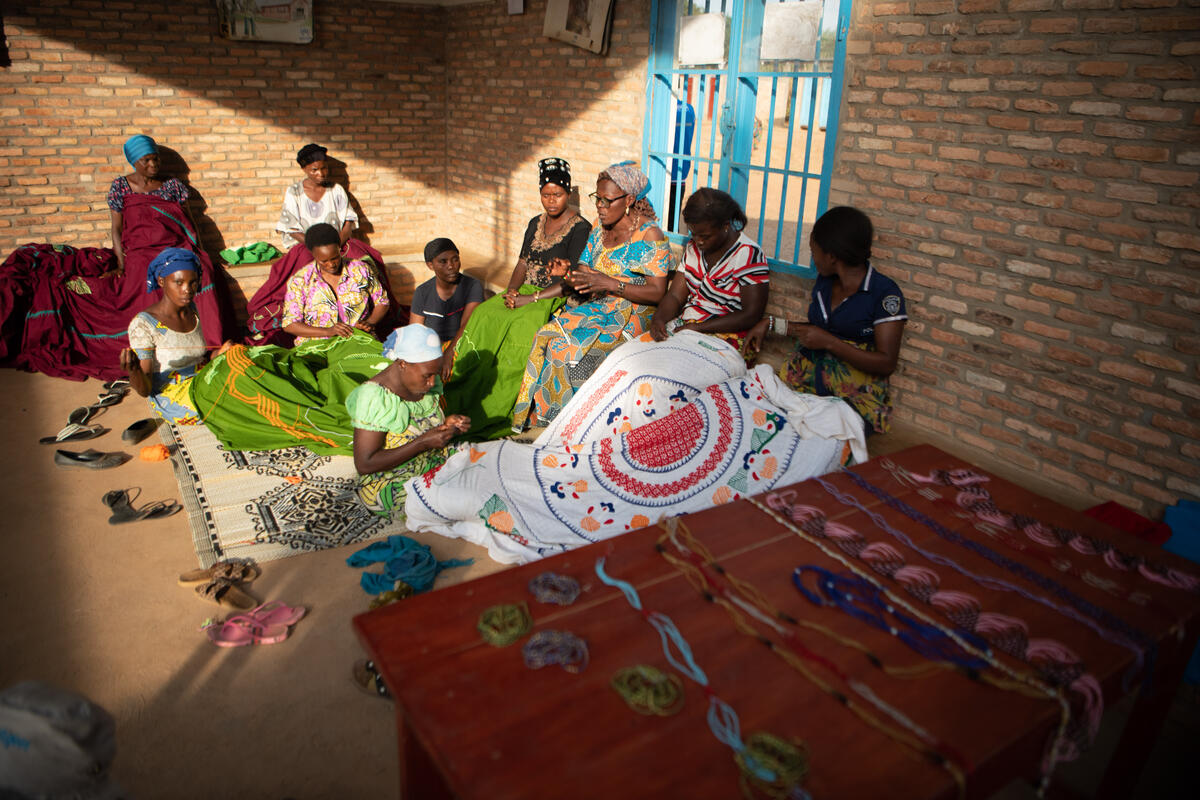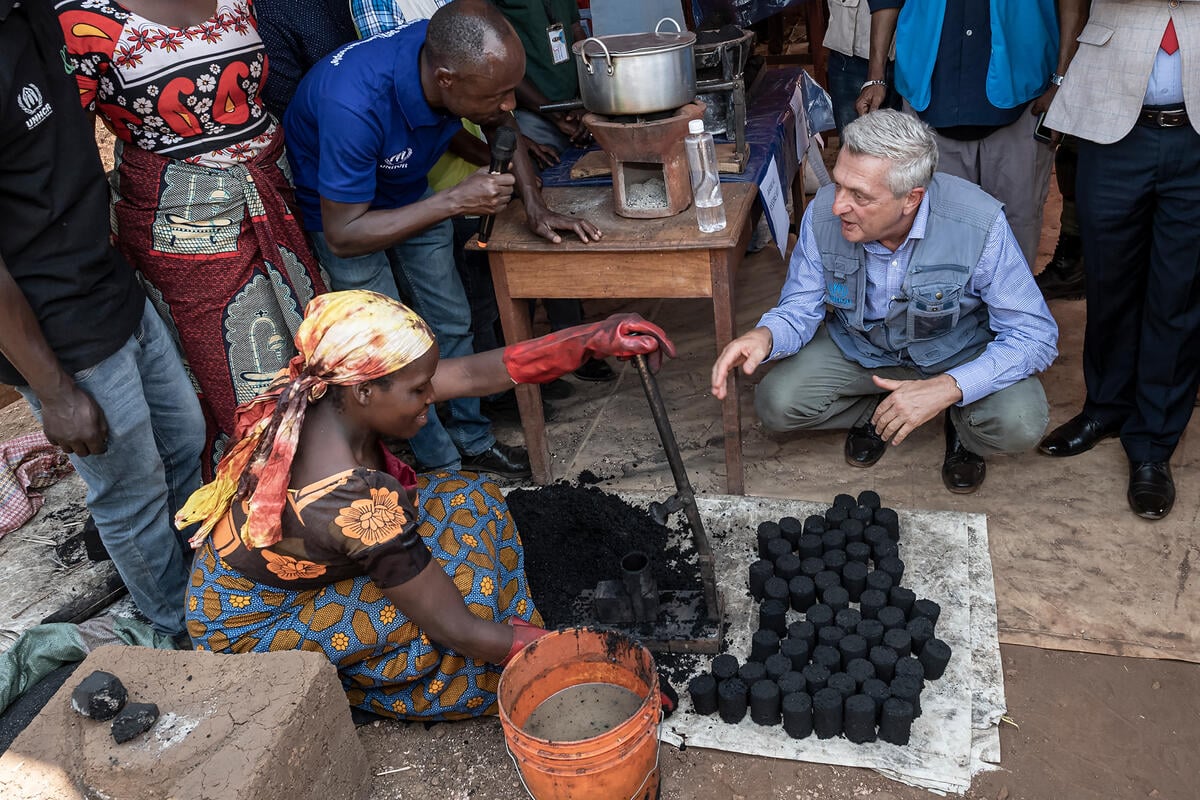A spot of relief for students and refugees
A spot of relief for students and refugees
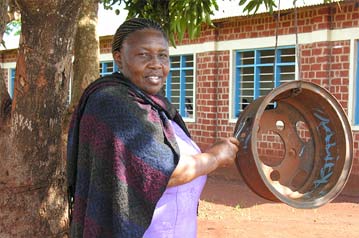
KIMWANYA, Tanzania, 18 Jan (UNHCR) - The bell of Kimwanya Secondary School is heard throughout the surrounding fields. At 7 a.m., it signals the 97 students in blue and white uniforms to find their way to the classrooms after their 2.5-kilometre walk from home.
Although it is known as the "school bell," the real source of the loud ringing is an old car wheel hanging under the mango tree, struck smartly with a spanner. This poor school did not even have money for a real bell - and certainly not for school buildings and proper toilets or washing facilities for the students.
Then the UN refugee agency stepped in to support Kimwanya Secondary School as part of the extensive Refugee Host Area Programme, which helps Tanzanian communities that host refugees from neighbouring countries. With assistance from the local community and UNHCR, the Tanzanian authorities opened the school in April 2005. It is strategically located to serve three communities and offers many of the local children their first opportunity for secondary education.
UNHCR funded the school's administration block, still under construction, and paid for two blocks of toilets, four water points, and twice-weekly deliveries of water. All of which adds up to better hygiene and a huge new opportunity in the north-western corner of this poor African country.
"I am so pleased every day to follow the progress of these young students, who now face a much brighter future," says Gaudencia Kimori, the headmistress of the school.
Madame Kimori was excited that this school - constructed for the use of both local communities and refugees hosted in Tanzania - could also serve Burundian refugees on their way home to their own country after a decade in exile.
The location turned out to be a perfect place for a "bathroom break" for refugees going home from refugee camps in Kibondo, some three hours away. At the school, they can freshen up before continuing the journey across the border to Burundi.
"Before I became headmistress here, I worked for Kasulu's Teachers College and I used to go to the camps and teach English to the Burundian teachers," says Madame Kimori, who is happy to share the school's toilets and water points. "Now I see them passing here and I can tell from their eyes how excited they are to go home to Burundi after many years of exile in Tanzania."
The convoys with returning Burundian refugees stop at Kimwanya twice a week, and the high school students make sure that the facilities are clean when they arrive. One of UNHCR's partners, Germany's GTZ (Deutsche Gesellschaft für Technische Zusammenarbeit), supplies water to the school twice a week. Another partner, Danida (Danish International Development Assistance), has constructed a rainwater collection tank, for use during the rainy season.
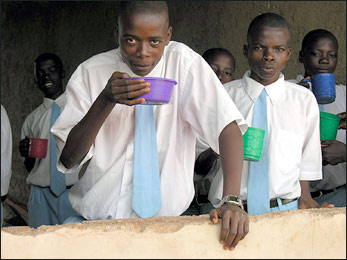
During 2006 the school should be able to accommodate 260 students, and to provide relief for many returning Burundians as well. Tanzania still hosts some 200,000 Burundian refugees, 65,000 of whom live in the camps in Kibondo. Many of those are likely to use the stop-over facilities at Kimwanya for some time to come.
UNHCR's Host Area Programme in Tanzania is carried out in all districts hosting refugees in north-western Tanzania. Support to the Tanzanian communities is rendered within several areas such as health, infrastructure, education and water/sanitation. Kimwanya Secondary School shows how education aid can be combined with water and sanitation aid to produce far-reaching benefits.
By Mia Bülow-Olsen in Kasulu District, Tanzania

